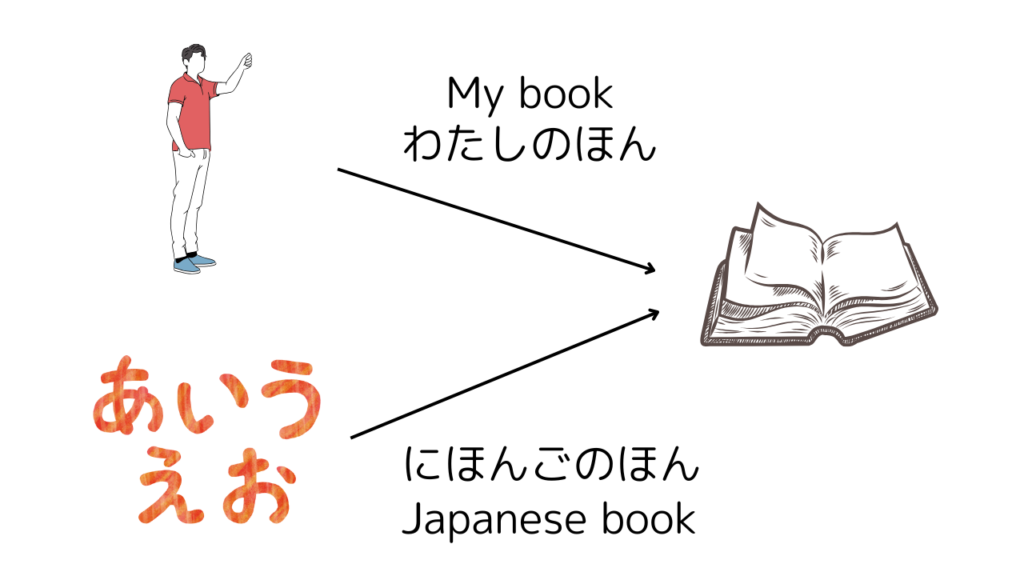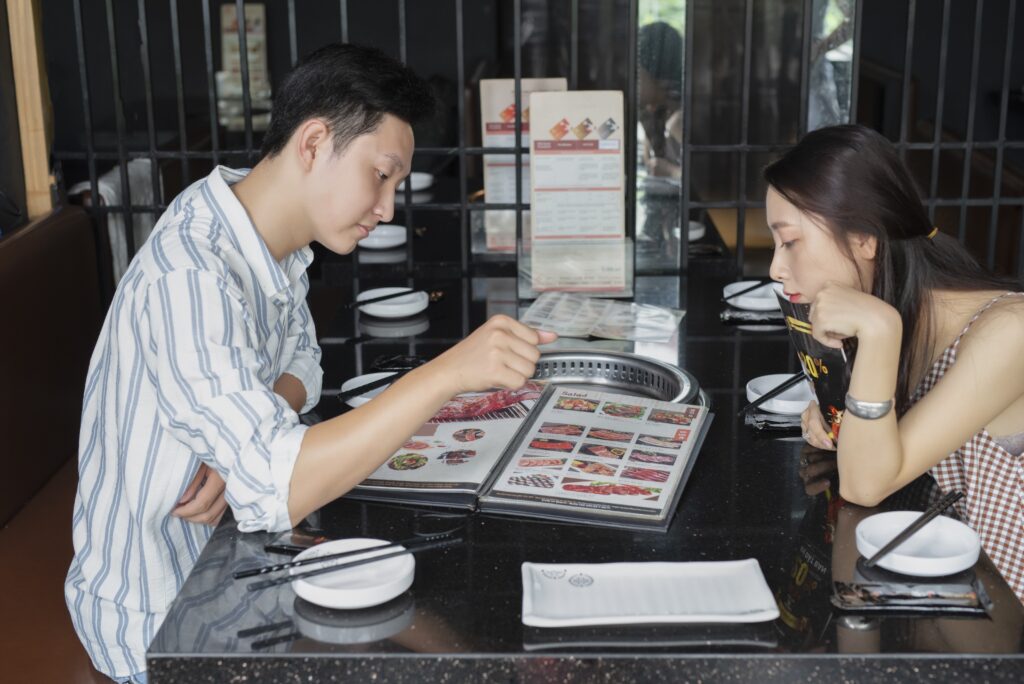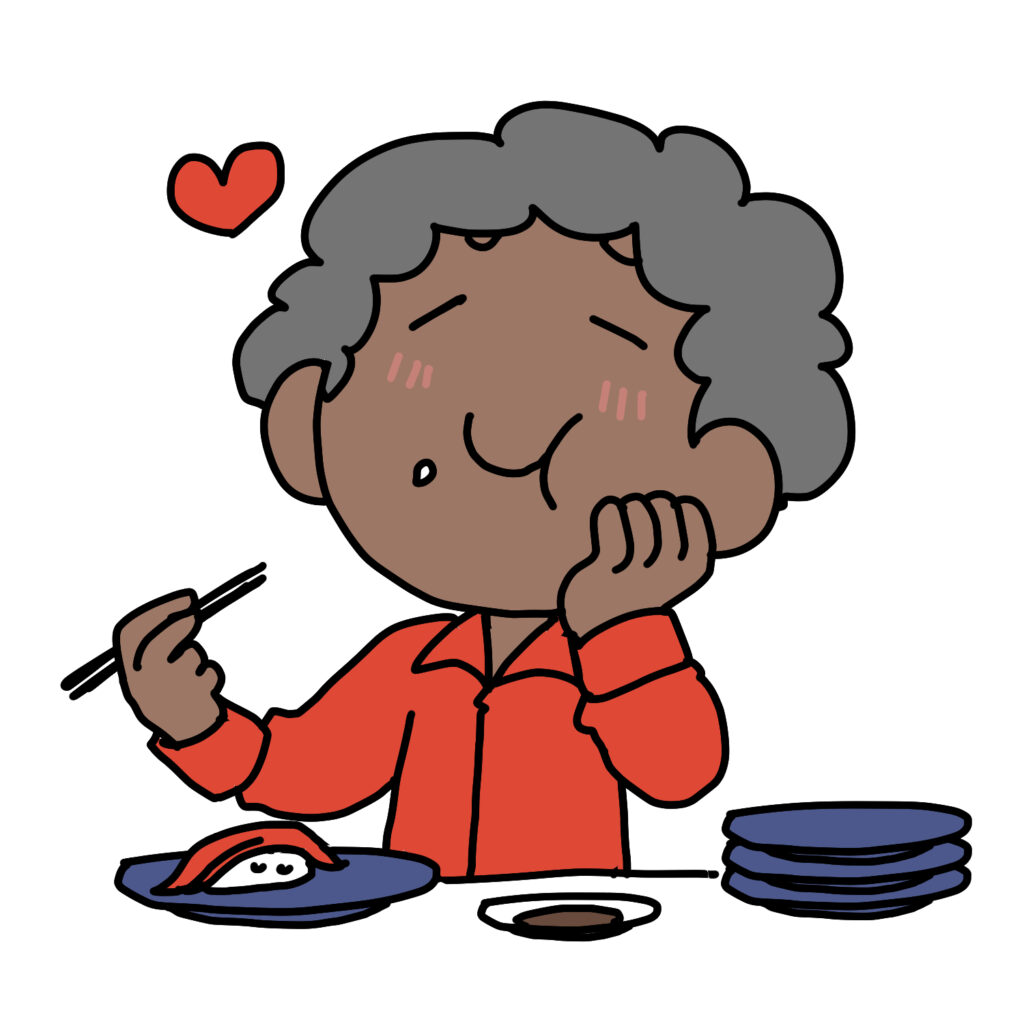名詞の名詞
Grammar meaning
In Japanese, when you describe one noun using another noun, you connect them with “の”.
The noun after “の” is the one being described, while the noun before “の” provides the description.
For example, if you want to describe a book as “mine”, you would say “わたしの本“.
In this case, the noun “本” is being described by the noun “わたし”.
The noun used for description can vary.
For example, it can indicate possession, as in “わたしの本“, specify time, as in “今日のばんごはん”, or show the producer or country of origin, as in “アメリカの車“.
It can also indicate affiliation, as in “レストランの店員“, or describe content, as in “どうぶつのえいが”.

Example sentence
・これは友だちのバイクです。
This is my friend’s bike.
・明日のじゅぎょうは休みになります。
Tomorrow’s class will be canceled.
・日本のカメラがありますか。
Are there Japanese cameras?
・このクラスの学生はみんなあたまがいい。
All the students in this class are smart.
・ここはかんこくりょうりのレストランです。
This is a Korean cuisine restaurant.

Additional notes
As we have seen so far, the Japanese particle “の” is highly versatile and can be used in various situations.
In some cases, concepts that require different grammatical structures in your native language can be expressed in Japanese using just “の”.
Instead of memorizing its meaning through direct translations into your native language, it is better to understand “の” as a grammatical tool used to describe one noun with another.
Try to grasp its usage and feel rather than relying solely on translations.
Conversation example
チャンさん:スミスさん、きのうどこでばんごはんを食べましたか。
スミスさん:きのうのばんごはんは日本りょうりのレストランで食べました。
チャンさん:いいですね。わたしも行きたかったです。
スミスさん:学校の前のお店だからこんどいっしょに行きましょう。
お店のメニューもえいごだから安心ですよ。
Chan: Mr. Smith, where did you have dinner yesterday?
Smith: I had dinner yesterday at a Japanese restaurant.
Chan: That’s nice. I wanted to go too.
Smith: It’s at the shop in front of the school, so let’s go together next time. The menu at the shop is also in English, so it’s easy to understand.

For Japanese Teachers
This grammar might seem simple at first glance for native Japanese speakers, but for non-native speakers, it can be one of those grammar points that’s hard to grasp in terms of its nuance.
Understanding the differences between the learner’s native language and Japanese grammar can make teaching it easier.
When I was teaching using the direct method, I focused more on helping students gradually realize, through daily lessons, that “no” is used in such cases, rather than expecting them to fully understand it within one lesson.
Also, the grammar of “このそのあのどの” is difficult to introduce unless the previous grammar is understood.
It’s a good method to teach the current grammar by imagining what kind of example sentences you would want to use for teaching “このそのあのどの”.
For those who are interested, you can check out more about “このそのあのどの” through the link here.




